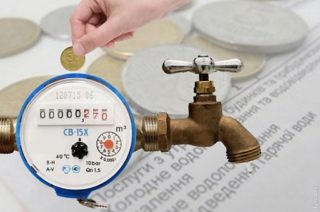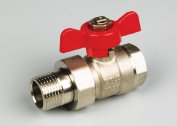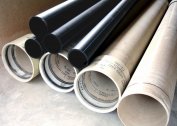The cost of providing apartments with hot and cold water increases every year. In order to know exactly where the money flows and control costs, it is important to understand the scheme of calculating water tariffs.
Current rates
Since January 2019, in the capital of Russia, 38 rubles 70 kopecks need to be paid for a cubic meter of cold water, while 191 rubles 73 kopecks are warmed up. In other regions, numbers vary, but not by much. January tariff increases contributed to an increase in VAT to 20 percent. There will be a new increase in the middle of summer, although the tax base will not change.
To determine the exact cost of a cubic meter of water in the region, you need to analyze the receipt. The price of 1000 cubic meters of cold water is indicated in the line of hot water supply, in the hot water supply - hot.
Who "estimates" water supply
Water supply to taps is organized by water users. These include individual entrepreneurs and owners of enterprises that have concluded agreements with economic organizations for the right to use water bodies. They provide services to the population - water consumers, who pay for them at the established rates.
Expenditure standards and the tariff plan are established by state authorities of the constituent entities of the Russian Federation and local self-government in accordance with Russian laws, which are periodically amended.
According to Decree No. 603, water consumers who have not installed metering devices at home or forget to call specialists for verification, the price of water per cubic meter. m is more than 40 percent.
What indicators make up the price per cubic meter of water
Water supply price tags include the following expense items:
- fluid extraction from the source and its transportation;
- used electricity;
- construction and repair of highways, treatment facilities;
- rental of premises and equipment in temporary use;
- the acquisition of new devices, filters, chemicals;
- laboratory research;
- waste disposal;
- payment of water tax and income tax;
- salary of employees, taking into account contributions to the PFR, FSS.
These are the costs of supplying the HVS. Tariffs for water consumers for hot water supply are two-component: they consist of the costs of maintaining the water coolant and heating. In addition, the receipt indicates the amount of water for technical common house needs, and the amount that is required to be paid for the service.
When calculating water tariffs in different areas of the country, regional characteristics are taken into account, including average wages and transportation costs.
Tariffs for water supply on the meter and without it
 The installation of metering devices gives a significant difference in payment. In their absence, consumption standards per registered person are taken into account. At the same time, the value of the tariffs themselves is 40 percent higher, which makes it unprofitable to extract part of the residents from the premises without meters and to register in the apartment where the devices are available.
The installation of metering devices gives a significant difference in payment. In their absence, consumption standards per registered person are taken into account. At the same time, the value of the tariffs themselves is 40 percent higher, which makes it unprofitable to extract part of the residents from the premises without meters and to register in the apartment where the devices are available.
For housing where three people live, the total apartment volume of cold water is 20.805 cubic meters at the rate of 6.935 m3 per tenant. The standard for heated liquid is 4.745 m3. A family with a child takes 14.235 cubic meters.
If metering devices are installed and their calibration is carried out regularly, you will have to pay only for the consumed liquid according to the meters. Installation of water meters is beneficial because it allows you to control water consumption and save it. This is useful not only financially, but also to protect the environment and water resources.
If several metering devices are installed in the dwelling, when submitting information to the management company, they must indicate separately. Otherwise, by the end of the year after recalculation, you will have to pay a decent amount.
Benefits for water services
Savings in utilities are not only possible through the installation of water meters. Regional and federal laws define preferential categories of citizens who pay for water supply at low rates. They include:
- disabled people and their relatives;
- large families;
- employees of fire services, Ministry of Internal Affairs.
The list of beneficiaries is much wider. To find out if your family falls into it, you need to contact the social assistance department of the municipality or make a request through the State Services portal. Also, socially unprotected citizens can receive subsidies to pay for communal services.
Stop tariff growth is almost impossible. To reduce costs, it is necessary to close the taps immediately after completion of water procedures. Technological devices will help save money: a double-bottom sink, small-hole shower heads, single-lever mixers, economical washing machines and dishwashers.



